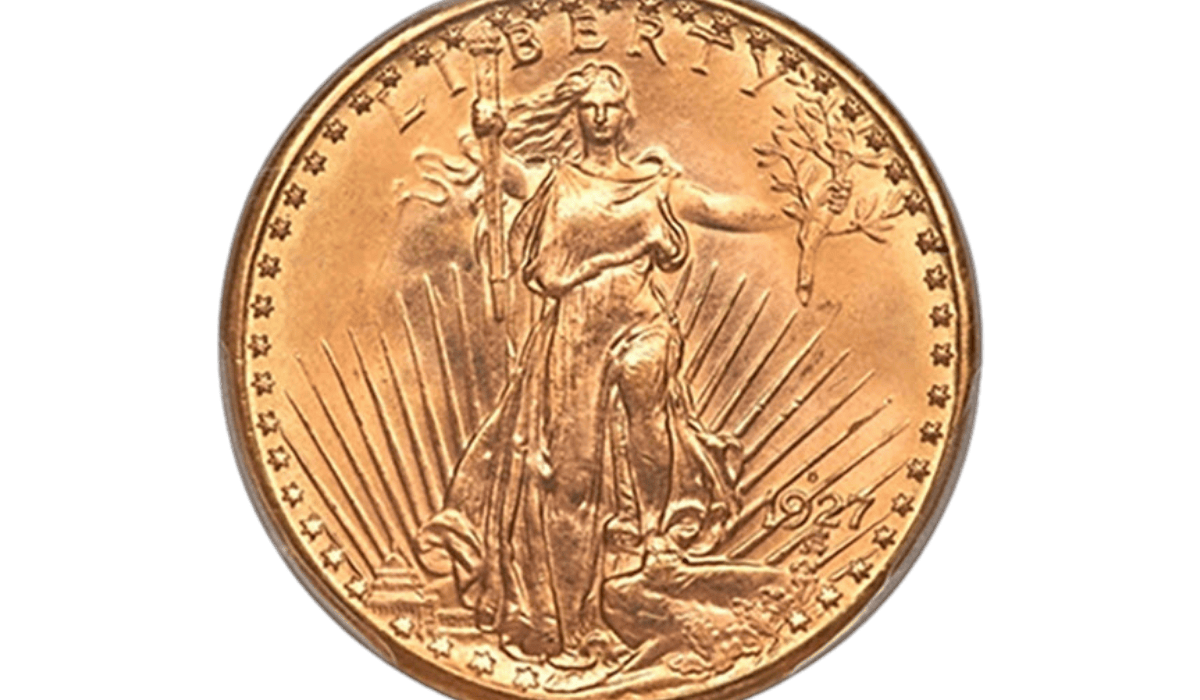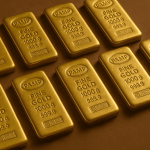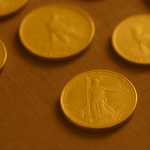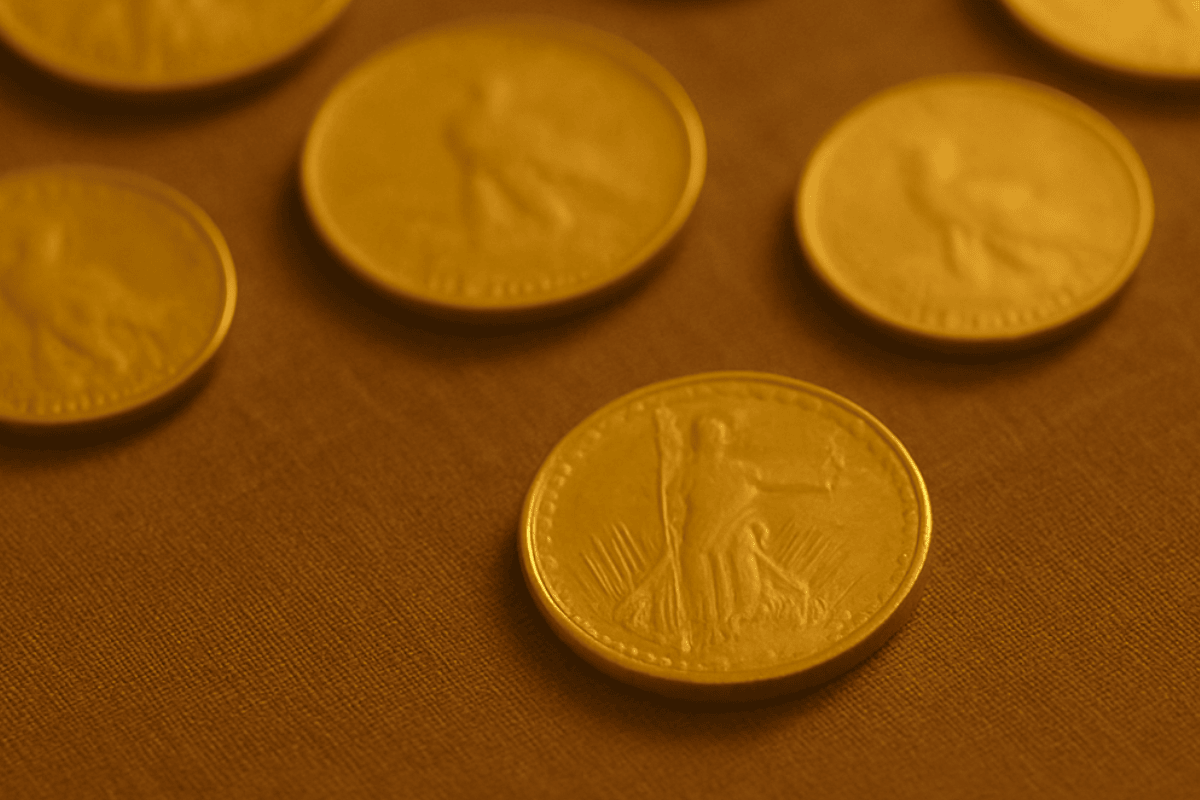In June 2021, a single coin, the 1933 Saint-Gaudens Double Eagle, sold at auction for a staggering $18.9 million, making it the most expensive gold coin ever sold. While most gold coins don’t fetch eight-figure prices, this jaw-dropping sale highlights the extraordinary value some coins can reach due to their rarity, history, and condition.
Gold coins have long attracted both investors and collectors. Some are prized for their purity and metal content, while others are valued for their historical significance or unique design. Understanding what makes certain coins so valuable can help you make informed decisions when collecting or investing.
Understanding Types of Gold Coins
Gold coins fall into three main categories based on how they are produced and what purpose they serve: bullion, proof, and collectible (numismatic) coins. Each type has different characteristics that affect its value and appeal.
Bullion Coins
Bullion coins are minted primarily for investment purposes. Their value is closely tied to the spot price of gold, and they are typically produced in large quantities. These coins are widely recognized and easy to trade, making them a popular choice for those focused on gold’s intrinsic value.
Well-known bullion coins include:
- American Gold Eagle – 22k gold, backed by the U.S. government
- Canadian Gold Maple Leaf – 24k gold, .9999 purity
- South African Krugerrand – One of the first modern bullion coins, 22k
- Austrian Philharmonic – 24k gold, popular in Europe
- Australian Kangaroo – 24k gold, known for annually changing designs
Proof Coins
Proof coins are created using a special minting process that results in sharp details and mirror-like finishes. They are struck multiple times with specially polished dies, making them visually striking and highly collectible. These coins are produced in limited quantities and often come in protective cases with certificates of authenticity.
Because of their craftsmanship and scarcity, proof coins usually carry a premium over their bullion counterparts, even if they contain the same amount of gold.
Collectible or Numismatic Coins
Collectible coins gain value from factors beyond gold content. These include rarity, age, historical context, and condition. Coins from early U.S. Mint runs, limited editions, or those with minting errors can be worth many times more than their melt value. Their appeal lies in their uniqueness and the stories they represent.
Gold Purity and Its Impact on Value
Gold purity is a critical factor in determining a coin’s value. It affects both the intrinsic metal value and the coin’s desirability to investors and collectors.
Carats vs. Fineness
Gold purity is measured in either carats or fineness:
- Carats: 24k is pure gold, while 22k means 91.67% gold
- Fineness: Expressed as a decimal, such as .9999 for 99.99% purity
For example, the American Gold Eagle is 22k (.9167), while the Canadian Gold Maple Leaf is 24k (.9999).
Gold Content Calculation
You can calculate the amount of pure gold in a coin by multiplying its total weight by its purity. For instance, a British gold sovereign weighs 7.988 grams and is 22k, meaning it contains approximately 7.322 grams of pure gold.
Durability and Appearance
Coins with lower purity often include alloyed metals like copper or silver. This makes them more durable and less prone to damage. For example, the reddish tint of the Krugerrand comes from its copper content. While 24k coins are purer, they are softer and more susceptible to scratching.
Coins with High Historical and Numismatic Value
Some coins are valuable not just for their gold, but for their historical importance, rarity, and pristine condition.
Famous High-Value Coins
- 1933 Saint-Gaudens Double Eagle – Sold for $18.9 million
- 1907 Ultra High Relief Double Eagle – Valued over $3 million
- 1794 Flowing Hair Eagle – One of the first U.S. gold coins, worth over $2 million
- 1880 Coiled Hair Stella – A rare $4 coin, valued at $2.5 million
These coins are prized for their rarity, historical context, and condition. Some were never officially circulated, adding to their mystique and value.
Mint Errors and Limited Editions
Coins with unusual minting errors or those produced in extremely limited numbers can command high premiums. A small variation in design or a production anomaly can turn an ordinary coin into an expensive collector’s item.
Condition and Grading Impact
Coins are professionally graded by services like PCGS and NGC. The better the condition, the higher the grade, and the more valuable the coin. Uncirculated, mint-condition coins often sell for significantly more than their circulated counterparts.
Popular Valuable Gold Coins to Know
These coins are well-known among collectors and investors for their value, beauty, and historical importance.
Double Eagles and Indian Head Coins
The $20 Saint-Gaudens Double Eagle is one of the most iconic and sought-after American gold coins. Minted from 1907 to 1933, its design by Augustus Saint-Gaudens is widely regarded as one of the most beautiful in U.S. coinage. Indian Head gold coins, available in $2.50, $5, and $10 denominations, are also popular for their unique incuse design and historical appeal.
Gold Sovereigns and American Buffalo
The British gold sovereign is a 22k gold coin with a long history and strong collector demand. The American Buffalo, introduced in 2006, is the U.S. Mint’s first 24k gold coin and features a design inspired by the classic Buffalo Nickel.
Krugerrand and Modern Bullion Icons
The South African Krugerrand, introduced in 1967, was the first gold bullion coin intended for private ownership. It remains one of the most traded gold coins globally. Other popular modern coins include the Austrian Philharmonic and Australian Kangaroo, both known for high purity and elegant designs.
Investment Considerations for Gold Coins
When buying gold coins for investment, it’s important to understand the different strategies and factors that influence profitability and liquidity.
Bullion vs. Collectible Strategy
Buying bullion coins is generally a straightforward way to invest in gold. Their value tracks the spot price closely, making them easier to sell. Collectible coins can offer higher returns if their rarity and demand increase, but they also carry more risk and require more expertise.
Premiums Over Spot Price
Coins often sell for more than the value of their gold content. This premium can be influenced by factors such as minting costs, demand, and rarity. Proof and numismatic coins usually have higher premiums than bullion coins.
Tax and Liquidity Factors
Some gold coins are exempt from capital gains tax or VAT in certain countries, which can make them more attractive. Government-backed coins like the American Eagle or Canadian Maple Leaf are widely recognized and more easily sold than private or obscure issues.
Grading, Authentication, and Buying Tips
Coin Grading Services
PCGS (Professional Coin Grading Service) and NGC (Numismatic Guaranty Corporation) are two leading organizations that independently grade and certify coins. A high grade from these services can significantly boost a coin’s market value.
Importance of Authentication
Certification not only confirms a coin’s grade but also ensures it is genuine. This protects buyers from counterfeits, which are increasingly common in the coin market.
Where to Buy Valuable Coins
Reputable dealers, established auction houses, and certified online marketplaces are good sources for buying valuable gold coins. Avoid deals that seem too good to be true and always verify the seller’s credentials.
Sizes, Denominations, and Accessibility
Common Sizes and Weights
Gold coins come in a range of sizes to suit different budgets:
- 1 oz
- 1/2 oz
- 1/4 oz
- 1/10 oz
For example, the American Gold Eagle is issued in all four sizes, making it accessible to both large and small investors.
Accessibility for Small Investors
Smaller denominations allow more people to invest in gold, though they often carry higher premiums per ounce. These coins can be a good entry point for those new to gold investing or with limited capital.
Trends and Market Insights
Demand for Collectibles
Interest in rare gold coins has grown, with auction prices for historically significant coins reaching record highs. Collectors are increasingly looking for coins that combine beauty with rarity.
Impact of Gold Prices
The market for gold coins often moves in tandem with the spot price of gold. When gold prices rise, bullion coin demand typically increases, though numismatic coins may follow independent trends based on collector interest.
Long-Term Value Potential
Many valuable gold coins have appreciated steadily over decades. Their combination of intrinsic value and historical appeal makes them a stable asset in uncertain economic times.
Building Wealth and Preserving History
Valuable gold coins represent more than just a store of wealth. They are pieces of history, art, and craftsmanship. Whether you’re drawn to them for their beauty, their investment potential, or their historical significance, understanding what makes them valuable is the first step to making informed decisions.
From bullion coins like the Krugerrand and American Eagle to rare collectibles like the 1933 Double Eagle, the world of gold coins offers something for every level of investor or collector. Focus on purity, rarity, condition, and authenticity, and align your purchases with your goals — whether financial or historical. With knowledge and careful selection, gold coins can become lasting assets in your portfolio or collection.






